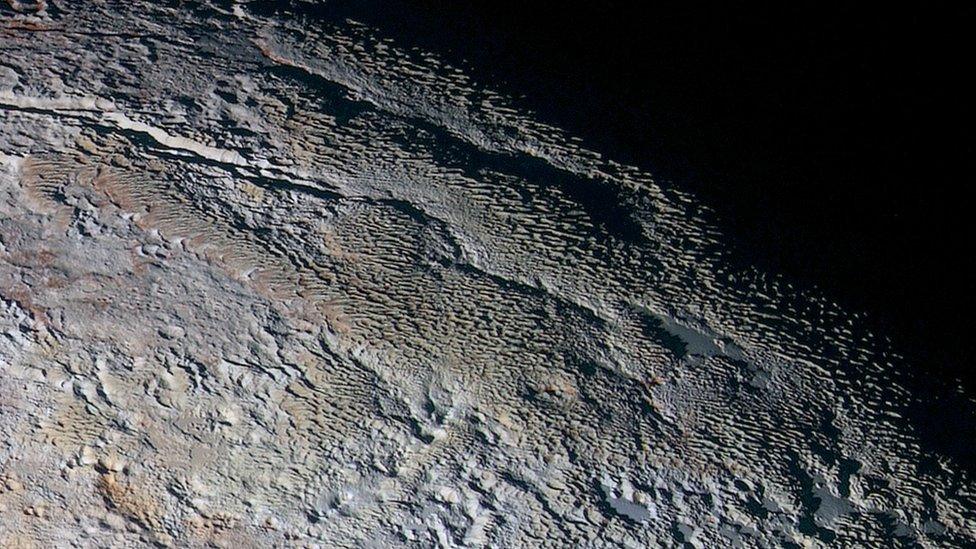New Brian May book opens up world of Victorian 3D
- Published
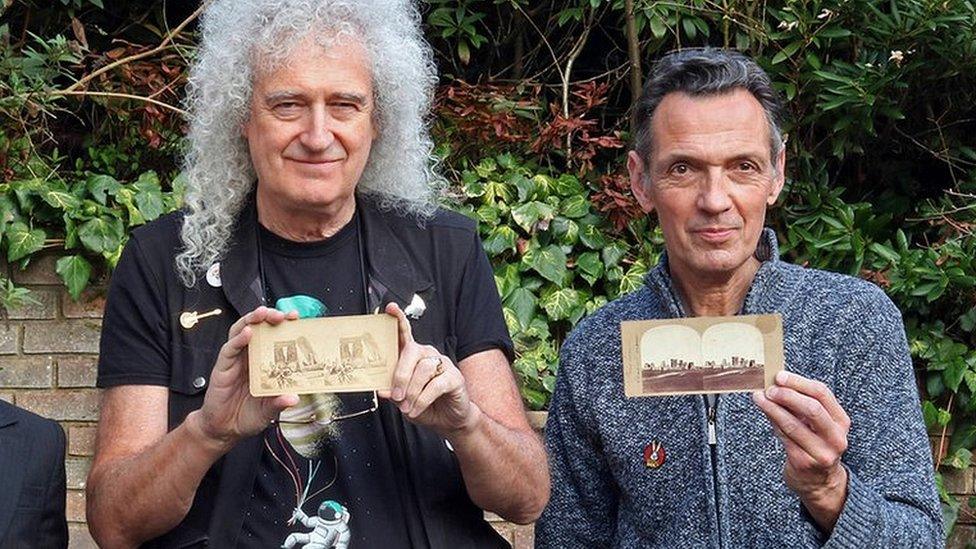
Brian May with Denis Pellerin, showing early Stonehenge stereoscopes unveiled last year.
Rock legend Brian May has co-authored a book about the Victorian craze for 3D photographs.
Known as stereoscopy, it used two images taken from subtly different angles which, when viewed together, mimic 3D vision.
The Queen guitarist said while the fashion faded in the 1860s, the same principle was used by Nasa to photograph asteroids.
"It was like the TV and films and internet of the day", he said.
The book, Stereoscopy: the Dawn of 3-D, was written with photography historian and former Leicester PhD student Denis Pellerin.
It celebrates the technology in general with a particular focus on the inventor Charles Wheatstone.
Mr May described physicist Wheatstone as a "genius and polymath".
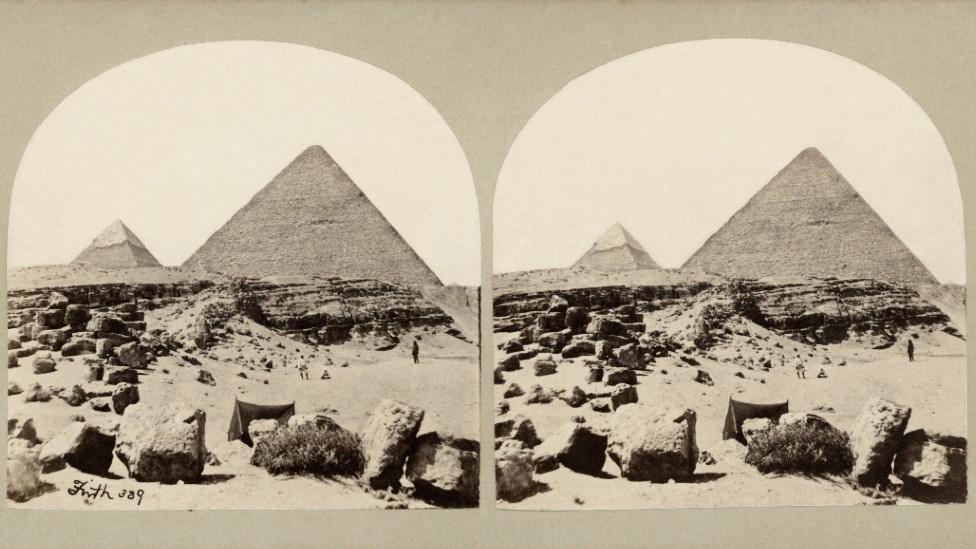
Stereoscopy allowed almost everyone to see the wonders of the world, like the pyramids at Giza, in new detail
Mr Pellerin, who studied at De Montfort University, said: "He was the first to show we see in 3D because while each of our eyes gives us a flat image but a slightly different image.
"The brain fuses the two images into one three-dimensional, unique image."
Adapting this phenomena to photography allowed people, in an age before mass travel, to look at the wonders of far-flung lands.
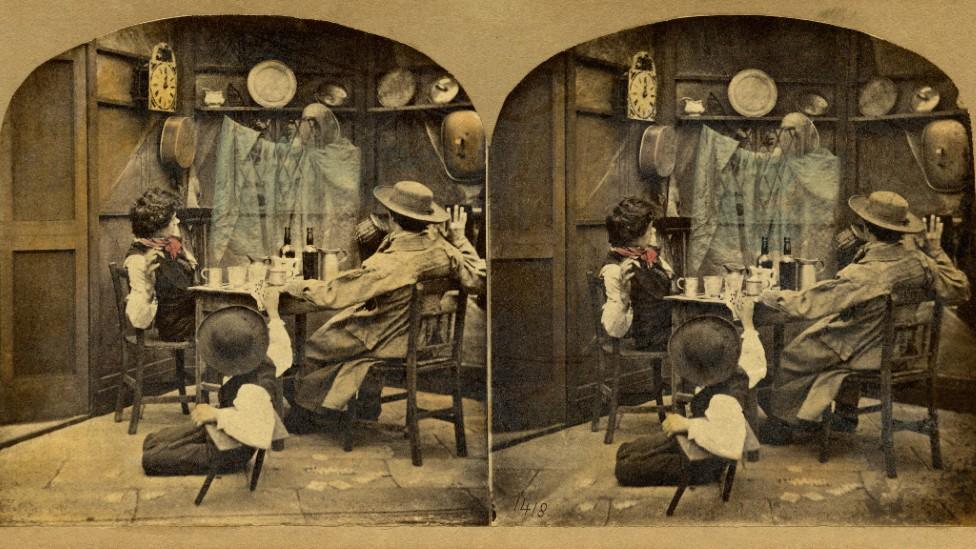
Victorians loved ghost stories, and stereoscopes tapped into this market
Mr May said: "It's hard for us to realise just how big it was, it was like the TV, films and internet of the day.
"The world saw the rest of the world through 3D at that moment.
"There were a million views on sale in London in the London Stereoscopic Company shops."
Subjects varied from Japanese samurai, ghost stories to idealised domestic scenes.
Mr May, who has collected stereo images for decades and last year unveiled what is believed to be the oldest family image taken at Stonehenge, also has a PhD in astrophysics.
"A lot of these Nasa projects, which are sending all these probes into the solar system, is what I am involved in.
"The funny thing is what I bring to them is stereoscopy, I bring them the 3D imagery, notably the one that went to Pluto, New Horizons.
"It was an incredible experience and I felt like I was in that probe, looking at Pluto, for the first time in 3D," he said.

Follow BBC East Midlands on Facebook, external, on Twitter, external, or on Instagram, external. Send your story ideas to eastmidsnews@bbc.co.uk, external.
Related topics
- Published3 August 2021
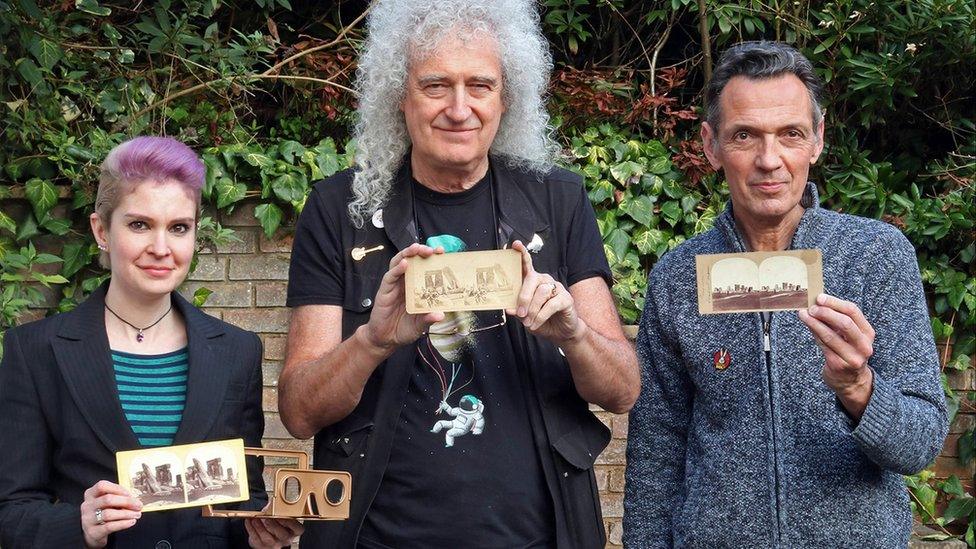
- Published25 September 2015
